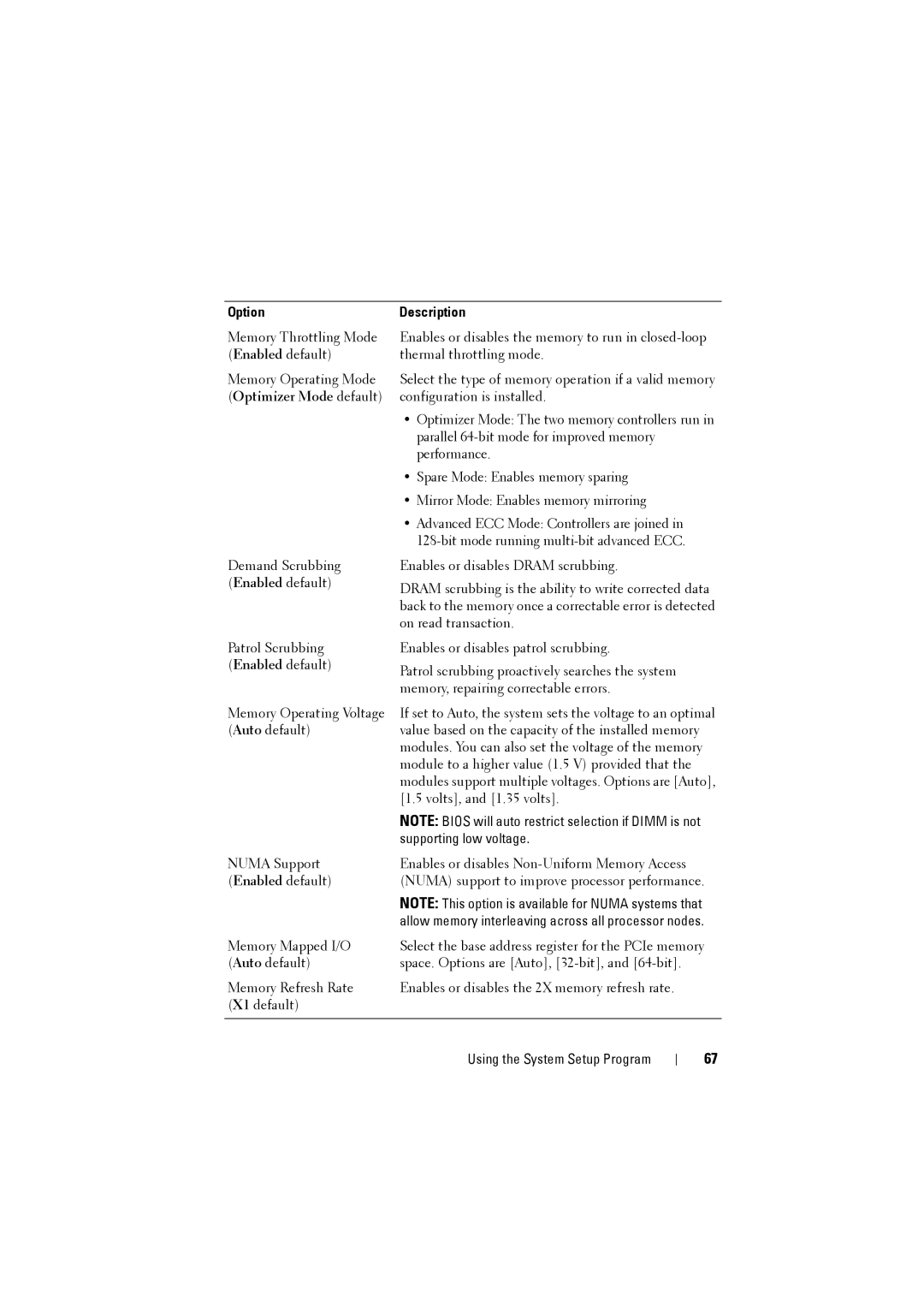Option | Description |
Memory Throttling Mode | Enables or disables the memory to run in |
(Enabled default) | thermal throttling mode. |
Memory Operating Mode | Select the type of memory operation if a valid memory |
(Optimizer Mode default) | configuration is installed. |
| • Optimizer Mode: The two memory controllers run in |
| parallel |
| performance. |
| • Spare Mode: Enables memory sparing |
| • Mirror Mode: Enables memory mirroring |
| • Advanced ECC Mode: Controllers are joined in |
| |
Demand Scrubbing | Enables or disables DRAM scrubbing. |
(Enabled default) | DRAM scrubbing is the ability to write corrected data |
| |
| back to the memory once a correctable error is detected |
| on read transaction. |
Patrol Scrubbing | Enables or disables patrol scrubbing. |
(Enabled default) | Patrol scrubbing proactively searches the system |
| |
| memory, repairing correctable errors. |
Memory Operating Voltage | If set to Auto, the system sets the voltage to an optimal |
(Auto default) | value based on the capacity of the installed memory |
| modules. You can also set the voltage of the memory |
| module to a higher value (1.5 V) provided that the |
| modules support multiple voltages. Options are [Auto], |
| [1.5 volts], and [1.35 volts]. |
| NOTE: BIOS will auto restrict selection if DIMM is not |
| supporting low voltage. |
NUMA Support | Enables or disables |
(Enabled default) | (NUMA) support to improve processor performance. |
| NOTE: This option is available for NUMA systems that |
| allow memory interleaving across all processor nodes. |
Memory Mapped I/O | Select the base address register for the PCIe memory |
(Auto default) | space. Options are [Auto], |
Memory Refresh Rate | Enables or disables the 2X memory refresh rate. |
(X1 default) |
|
|
|
Using the System Setup Program
67
